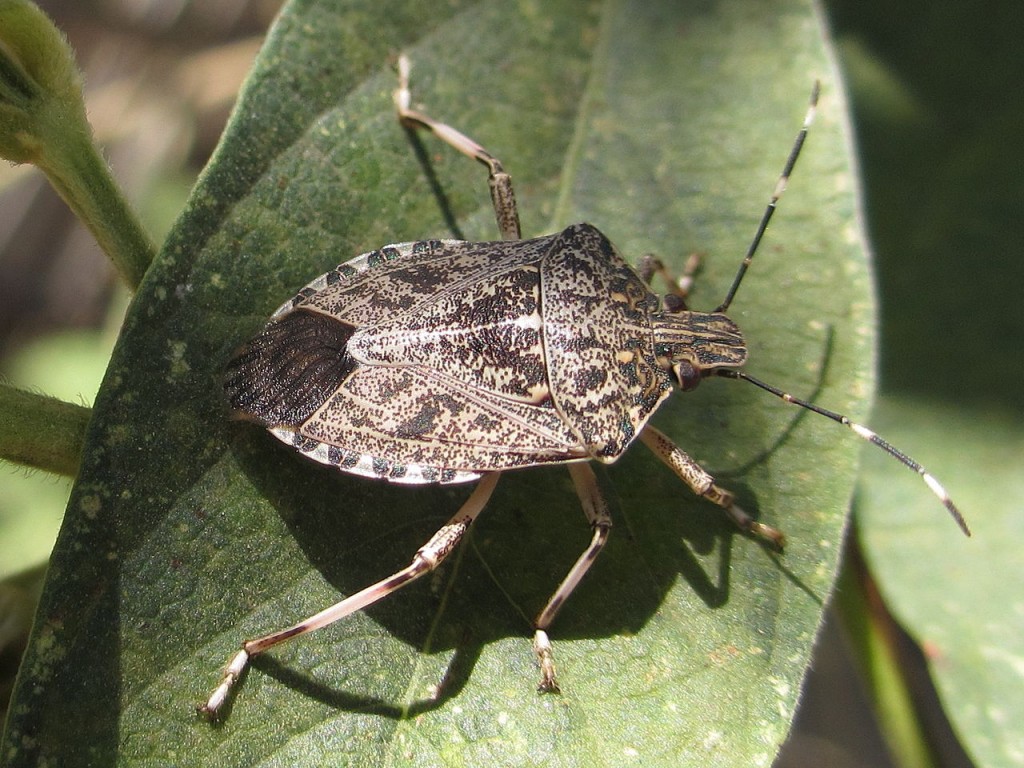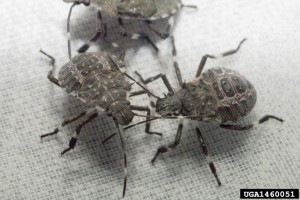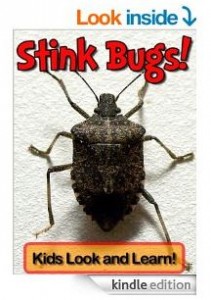Stink Bugs: Will They Bite and How Can I Get Rid of Them?

Brown Marmorated Stink Bugs
Stink bugs are one of those creatures everyone sees, but no one really understands or likes, and for good reason. The Brown Marmorated Stink Bug (Halyomorpha halyes), also known by BMSB, first showed up in the US around 2001 in Pennsylvania. It's thought to have been brought in with either fruits or fruit trees of some sort. As a native to Eastern Asia it is truly an invasive. Even in its home countries, it's a pest, including in Japan, Korea, and China. In the last decade or so they have invaded over thirty-four states in the Mid-Atlantic region of the US, including Washington DC. They were first seen in Oregon and out west around 2004 and since then they've spread in California and other states.
I'm going to call these guys stink bugs for now because Brown Marmorated Stink Bug sounds good, but it's long to type and BMSB just looks funny. The stink bugs we're talking about are mostly brown or marbled brown and tan on top and whitish grey on bottom. They are usually about 1" long as adults, smaller as nymphs. They belong to the Hemiptera, or "true bug" family, and more specifically, to the suborder called Heteroptera. That's not to say that there are false bugs, but true bugs are "typical insects" with the usual set up of body parts and legs. Hemiptera, also, all have piercing mouth parts (bug sippy straws). Stink bugs and Heteropterns also have a special set of wings (Heteropera means "different wings" in Greek). Their type of wings are called hemelytra. The wing part nearest their head is leathery while the part near their rear is membranous like the wings of a dragonfly. If you look carefully at the stink bug's back you can see a large X. It's this X that lets you know it's in the hemiptera family. There are two triangles formed by the X, one near the head, and one near the rear. The one near the rear is the set of membranous wings folded up. X marks the spot when you're looking for all true bugs.

To be sure you're looking at a brown marmorated stink bug, and not a native US species, be sure to look for the white bands that are on their antennae. There should be one near the antennae joint, and sometimes a smaller one or two closer to the head.
When talking with friends and "non-bug-folks", some of the first questions they ask are:
1. Do stink bugs bite? Nope, you're safe. If you look closely at these little home (and crop) invaders, you'll see that they have a straw like projection that tucks up under their head. This is a sucking proboscis. It can pierce the flesh of fruit, such as apples, pears, and peaches, so it's not out of the question that it could give you a short poke or stab, but this is rare. They don't sting either.
There are other Hemipterans that can give a much worse poke than the stink bug. Check out this picture of an Assassin bug sucking the life juices from a beetle.

2. My cat plays with stink bugs, will it get hurt? The answer to this is similar to the question above. The cat may get a short poke from the stink bug, but it won't hurt them.
3. Why do stink bugs stink? If you've ever disturbed a stink bug, squashed one, or vacuumed one up, then you know they smell really bad. The smell has been characterized as anything from cilantro to a rubber burning scent. This is the only defense for these fruit-sucking creatures, to stink. It's a defense mechanism that may work for predators that are thinking about eating it, but for most of us, it's just a nuisance.
4. Are stink bugs harmful? Yes and no. They are harmful, but not to the average home owner or apartment dweller. They feed exclusively on the juices of crop plants and fruits, meaning tomatoes, apples, peaches, grapes, etc. They do not chew wood, eat up apartment walls, or destroy anything in your house, so you're safe. However, in the grand scheme of things they are very harmful because they pierce and damage the foods our farmers grow, and even the food in our gardens, which can be very expensive. Stink bugs are on the radar of all crop growers and the USDA because of the harm they are causing to fruit trees and crops.
5. Why are stink bugs in my house? Stink bug infestation usually occurs in the fall, after the fruit juices dry up and the weather starts to turn. In the wild stink bugs would naturally look for bark and crevices to overwinter in, but in modern times, a nice warm house full of cracks and crevices is perfect. They usually sleep all winter, though you may see one crawl around occasionally. Their ultimate goal is to get back outside when the weather gets warm, and during winter they enter a type of hibernation. Your house just happens to be convenient.

6. How do I get rid of stink bugs? There are a number of natural ways to get rid of stink bugs, from pans of water and soap, to using pheromone attractants. I found the "Stop BMSB" page, from the USDA, quite helpful with ideas and how-to instructions. This page also has some great videos about tracking the stink bug, trapping stink bugs, and making natural traps. There are also some very specific guidelines about what chemicals you can and can't use, so please check their recommendations. Just FYI, bug bombs in the house don't work and it's potentially illegal to use them because they are not labeled for stink bugs.
Because I'm an educator and I think that all creatures present an opportunity for teaching, I have to mention some resources that you could consider using for teaching about stink bugs:
The book, "Hey There, Stink Bug" from Aughor Leslie Bulion (ages 6-9) introduces you to stink bugs and provides poetry and biological information with fun illustration. ($12)
Stink Bugs! Learn about Stink Bugs and Enjoy Colorful Pictures--Look and Learn (Kindle edition) by Becky Wolff. ($.99)
Scholastic Reader Level 2: Stinky Bugs by Joan Emerson. ($.01)
There are more unique facts about the stink bug, but for now this is a good introduction. Again, if you'd like to learn more, check out the USDA link. Yes, they're pests, but they're harmless in your home and nothing to be afraid of, just a nuisance. In the grand scheme of things, they are quite harmful, and it's best if you can remove them from your home and yard, and then humanely getting rid of them.


